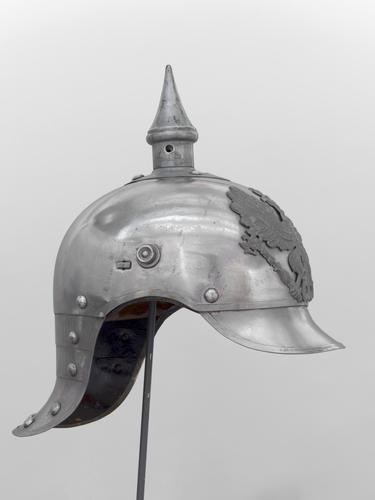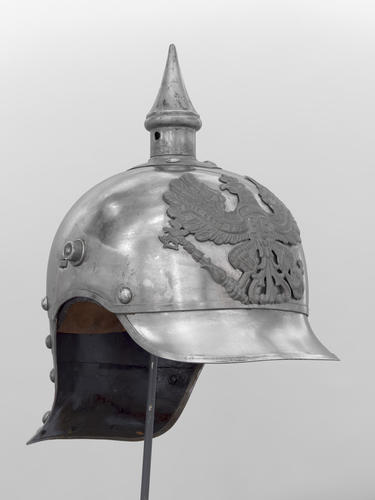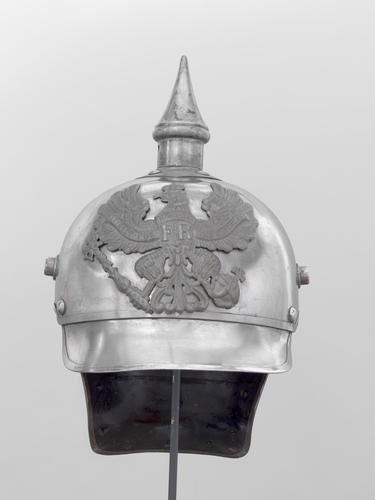-
1 of 253523 objects
Curassier helmet 1860
Steel, leather | RCIN 69441

Herm. Weissenburger & Cie, Stuttgart-Cannstatt
Curassier helmet 1860

Herm. Weissenburger & Cie, Stuttgart-Cannstatt
Curassier helmet 1860

Herm. Weissenburger & Cie, Stuttgart-Cannstatt
Curassier helmet 1860



-
The Imperial German Army went to war in 1914 wearing leather Pickelhaube helmets with brass trim and spikes (such as RCIN 69442). However the ensuing sea embargo meant that leather was soon difficult to purchase and brass had become a valuable commodity as it was needed to make shell casings. Spikes were deemed impractical for trench warfare. Thus helmets in the style of this example, the M1915, became more commonplace, with replaceable spikes and steel trim. In 1916 the 'coal scuttle' style helmet was introduced, which was deemed more practical and protective, RCIN 69443 is an example of this.
This M1915 helmet was made for the 7th Kürrassier Regiment 'von Seydlitz', a heavy cavalry regiment of the Royal Prussian Army, formed in 1815 and disbanded in 1919. A dulled steel helmet with 'lobster' tail neck guard and a broad, rounded front peak. The crown of the helmet has a detachable short spike. The front of the helmet has a grey Imperial German eagle attached. The chinstrap which was once attached, is no longer with the helmet. The interior has a tan leather liner.Provenance
Formed part of King George V's War Museum at Windsor Castle, established to display his collection of First World War souvenirs; the King was assisted by the Royal Archivist & Librarian John Fortescue (1859-1933). Many of these objects were loaned to the Imperial War Museum in 1936 at the suggestion of King Edward VIII.
-
Creator(s)
(retailer/supplier)(nationality)Acquirer(s)
-
Medium and techniques
Steel, leather
Category
Object type(s)